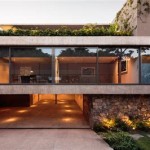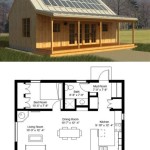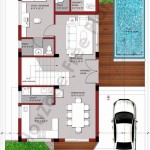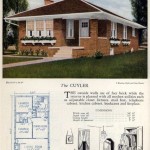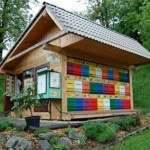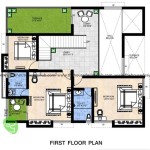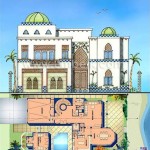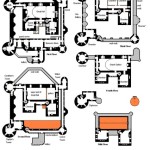Large Luxury Log Home Floor Plans: Designing Grandeur and Rustic Charm
Large luxury log homes represent a synthesis of rustic aesthetics and modern opulence. The appeal of these residences lies in their inherent connection to nature, combined with spacious layouts and high-end amenities. This article delves into key considerations when developing floor plans for large luxury log homes, highlighting essential elements that contribute to both functionality and aesthetic appeal.
Prioritizing Open Concept Living Spaces
A defining characteristic of contemporary log home design, particularly in larger models, is the emphasis on open concept living spaces. This design philosophy integrates the kitchen, dining area, and living room into a unified, expansive zone. The advantages of this approach are multifaceted. Firstly, it promotes social interaction. Family members and guests can easily engage with one another regardless of their activity within the space. A person preparing a meal in the kitchen remains visually and aurally connected to those relaxing in the living room or seated at the dining table. Secondly, open floor plans maximize natural light penetration. Eliminating interior walls allows sunlight to flood the entire area, creating a brighter and more inviting atmosphere. Thirdly, open concepts enhance the perceived size of the home. By minimizing visual barriers, the space feels larger and more airy.
When designing the open concept living area, it’s crucial to consider the placement of key elements. The kitchen, often the focal point, should be strategically positioned to facilitate both functionality and visual appeal. A large island with seating provides ample workspace and serves as a natural gathering spot. The dining area should be located to seamlessly connect the kitchen and living room, creating a flow for entertaining. The living room, often anchored by a grand fireplace, should offer comfortable seating arrangements conducive to relaxation and conversation.
Careful consideration should be given to zoning within the open concept space. While the area is unified, it’s important to create distinct zones for different activities. This can be achieved through the use of area rugs, changes in flooring material, and strategically placed furniture. For example, a large area rug can define the living room space, while a change in flooring from hardwood to tile can delineate the kitchen area.
Furthermore, lighting design plays a critical role in enhancing the ambiance of the open concept living area. A combination of ambient, task, and accent lighting should be incorporated to create a layered and dynamic lighting scheme. Recessed lighting provides general illumination, while pendant lights over the kitchen island offer focused task lighting. Accent lighting can be used to highlight architectural features, such as the log walls and exposed beams.
Incorporating Luxurious Master Suites
In large luxury log homes, the master suite is often designed as a private sanctuary, offering respite and rejuvenation. The floor plan should prioritize space, privacy, and an array of luxurious amenities. Key components of a well-designed master suite include a spacious bedroom, a lavish ensuite bathroom, a walk-in closet, and, ideally, a private sitting area or balcony.
The master bedroom should be generously sized to accommodate a king-size bed, comfortable seating, and ample storage. The orientation of the bedroom should be carefully considered to maximize natural light and views. Windows should be strategically placed to capture scenic vistas while maintaining privacy. A private fireplace can add a touch of warmth and romance to the space.
The ensuite bathroom is an integral part of the master suite and should be designed with luxury and functionality in mind. A double vanity provides ample space for two individuals to get ready simultaneously. A large, walk-in shower with multiple showerheads and body jets offers a spa-like experience. A soaking tub, ideally positioned near a window with a view, provides a relaxing retreat. Heated floors add a touch of comfort, especially during colder months.
The walk-in closet should be thoughtfully designed to maximize storage and organization. Custom shelving, hanging rods, and drawers should be tailored to the individual's needs. A dressing area with a full-length mirror and ample lighting is essential. A separate shoe storage area and a designated space for accessories can further enhance the functionality of the closet.
A private sitting area or balcony provides an additional space for relaxation and contemplation. This area can be furnished with comfortable seating, a coffee table, and a bookshelf, creating a cozy retreat within the master suite. A balcony allows the occupants to enjoy the fresh air and scenic views from the privacy of their own suite.
Privacy is paramount in the master suite. The suite should be located away from high-traffic areas of the home, such as the entry hall and living room. Soundproofing measures, such as insulated walls and doors, can further enhance privacy.
Designing for Outdoor Living and Entertainment
A significant aspect of luxury log home living is the seamless integration of indoor and outdoor spaces. Floor plans for large luxury log homes should prioritize outdoor living and entertainment areas, creating a connection with nature and providing ample space for relaxation and recreation. Key components of outdoor living spaces include expansive decks, covered patios, outdoor kitchens, and fire pits.
Expansive decks and patios extend the living space outdoors, providing ample room for dining, lounging, and entertaining. The size of the deck or patio should be proportionate to the size of the home and the number of occupants. The deck or patio should be constructed from durable, weather-resistant materials, such as treated lumber, composite decking, or natural stone.
Covered patios offer protection from the elements, allowing for year-round enjoyment of the outdoor space. The roof of the covered patio can be constructed from a variety of materials, such as wood, metal, or glass. The patio can be enclosed with screens or glass panels to create a three-season room. Outdoor fireplaces or heaters can extend the use of the patio into the colder months.
Outdoor kitchens provide a convenient and enjoyable space for preparing and cooking meals outdoors. The outdoor kitchen should include a grill, a sink, a countertop, and storage cabinets. A built-in refrigerator and a beverage cooler can further enhance the functionality of the kitchen. The outdoor kitchen should be located near the dining area for easy serving.
Fire pits create a warm and inviting gathering spot for socializing and relaxation. The fire pit can be constructed from a variety of materials, such as stone, brick, or metal. The fire pit should be located in a safe area away from flammable materials. Comfortable seating should be arranged around the fire pit to encourage conversation and camaraderie.
Landscaping plays a crucial role in enhancing the beauty and functionality of the outdoor living spaces. Native plants and trees should be incorporated into the landscape to create a natural and sustainable environment. Water features, such as fountains and ponds, can add a touch of serenity and tranquility. Lighting should be strategically placed to illuminate pathways, highlight architectural features, and create a festive ambiance.
Access to outdoor living spaces should be seamless and convenient. Multiple doors and windows should connect the indoor and outdoor spaces, creating a fluid transition. Sliding glass doors or French doors provide easy access to the deck or patio. Large windows allow for panoramic views of the surrounding landscape.
In addition to these essential elements, other features can enhance the outdoor living experience. These include swimming pools, hot tubs, tennis courts, and outdoor game areas. The design of the outdoor living spaces should be tailored to the individual's lifestyle and preferences.
Furthermore, consideration should be given to the orientation of the outdoor spaces to maximize sunlight and views while minimizing exposure to harsh weather. Shading devices, such as awnings and pergolas, can provide respite from the sun. Windbreaks, such as fences and hedges, can protect the outdoor spaces from strong winds.
Ultimately, the design of large luxury log home floor plans requires a holistic approach that balances aesthetic appeal with functional considerations. Open concept living spaces, luxurious master suites, and thoughtfully designed outdoor areas are integral components of a well-executed floor plan. By prioritizing these elements, homeowners can create a residence that embodies both rustic charm and modern sophistication.

Golden Eagle Log Homes Big Sky 9870al Floor Plan Cabin Plans Home

Domain Has Expired Log Cabin Floor Plans Home Designs

Frontier Log Homes Luxury Cabin Montrose Co

Log Home Luxury Introducing A 5 Bedroom With Breezeway To An In Law Suite Floor Plan

Custom Log Home Floor Plans Katahdin Homes

Golden Eagle Log And Timber Homes Photo Gallery

Luxury Log Homes Beaver Mountain Cedar

Floor Plans 6001 10000 Square Feet

Log Homes Home Floor Plans Timber Frame Dream House Cabin Mansion

Luxury Log Homes Beaver Mountain Cedar

